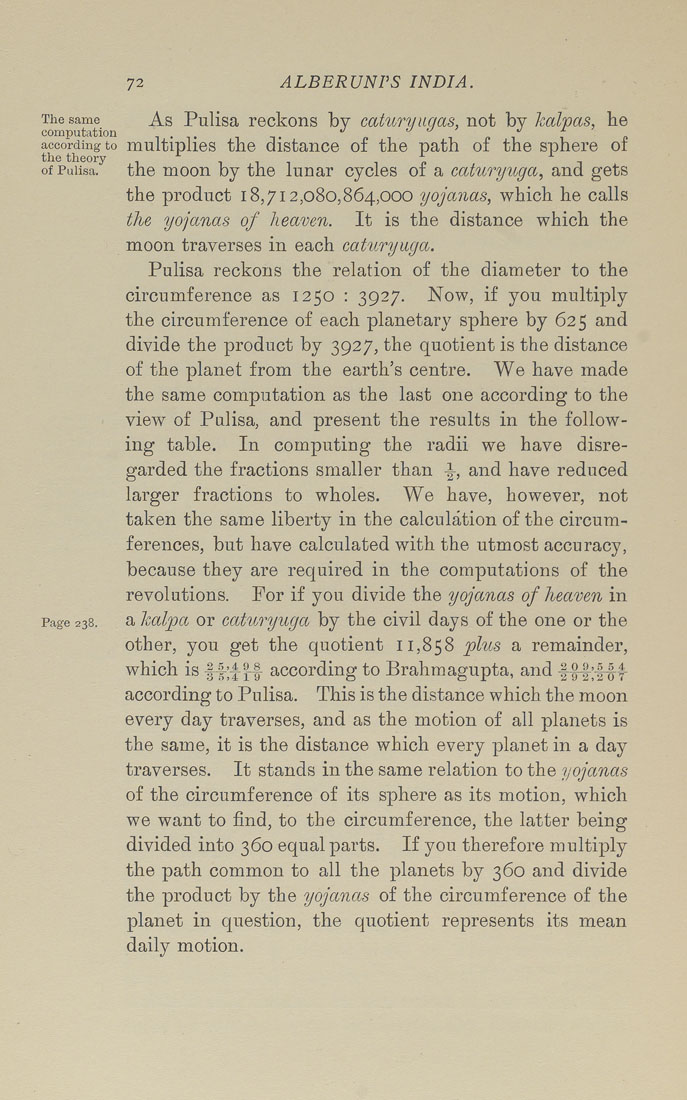72 ALBERUNTS INDIA.
The same As Pulisa Tockons bv caturi/uc/as, not by kalpas, he
computation i-t -, -i. (>ii fi i
according to multiplies the distaucc of the path of the sphere or
the theory i i -i i t c
of Pulisa. the moon by the lunar cycles of a caturyugct, and gets
the product 18,712,080,864,000 yojanas, which he calls
the yojanas of heaven. It is the distance which the
moon traverses in each caturyuga.
Pulisa reckons the relation of the diameter to the
circumference as 1250 : 3927. Now, if you multiply
the circumference of each planetary sphere by 625 and
divide the product by 3927, the quotient is the distance
of the planet from the earth's centre. We have made
the same computation as the last one according to the
view of Pulisa, and present the results in the follow¬
ing table. In computing the radii we have disre¬
garded the fractions smaller than ^, and have reduced
larger fractions to wholes. We have, however, not
taken the same liberty in the calculation of the circum¬
ferences, but have calculated with the utmost accuracy,
because they are required in the computations of the
revolutions. For if you divide the yojanas of hectven in
Page 238. a kctlpa or cctturyugct by the civil days of the one or the
other, you get the quotient 11,858 plus a remainder,
which is f-|;f rf according to Brahmagupta, and f f-|;|~g-f
according to Pulisa. This is the distance which the moon
every day traverses, and as the motion of all planets is
the same, it is the distance which every planet in a day
traverses. It stands in the same relation to the yojctnas
of the circumference of its sphere as its motion, which
we want to find, to the circumference, the latter being
divided into 360 equal parts. If you therefore multiply
the path common to all the planets by 360 and divide
the product by the yojancts of the circumference of the
planet in question, the quotient represents its mean
daily motion.
|








